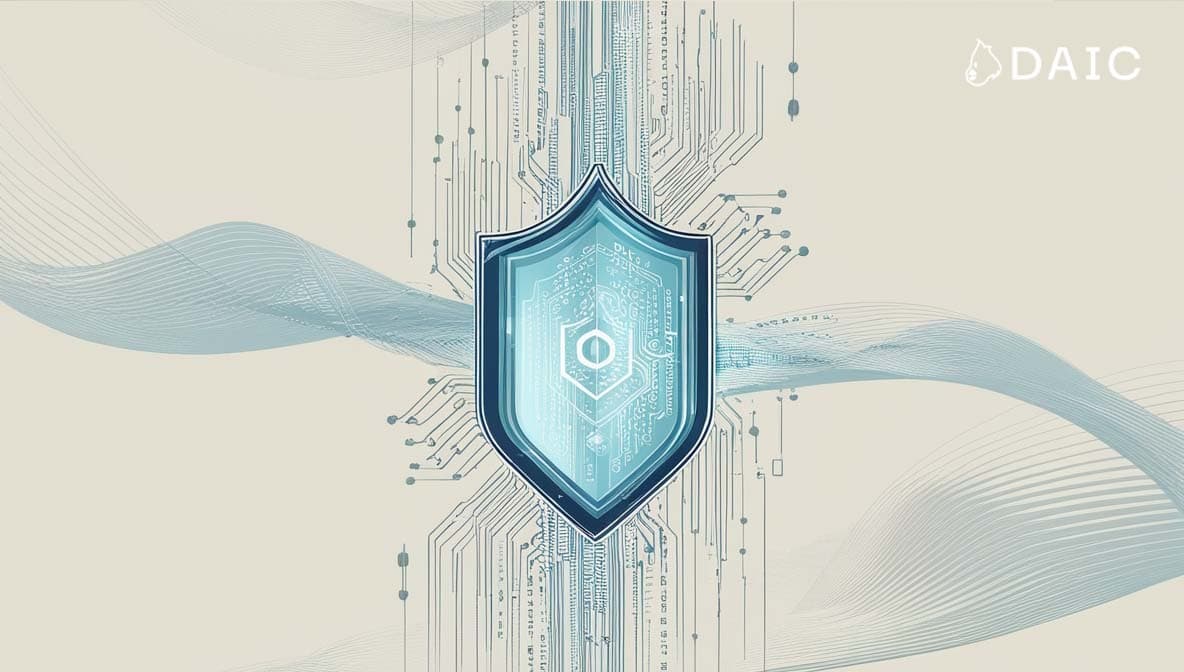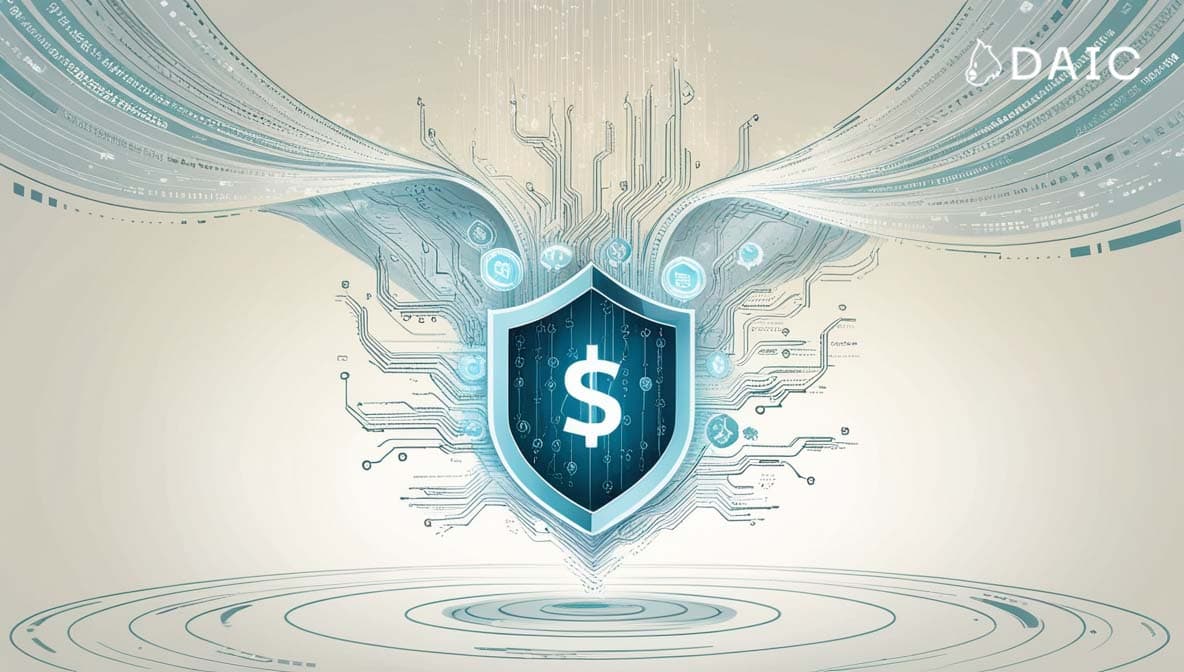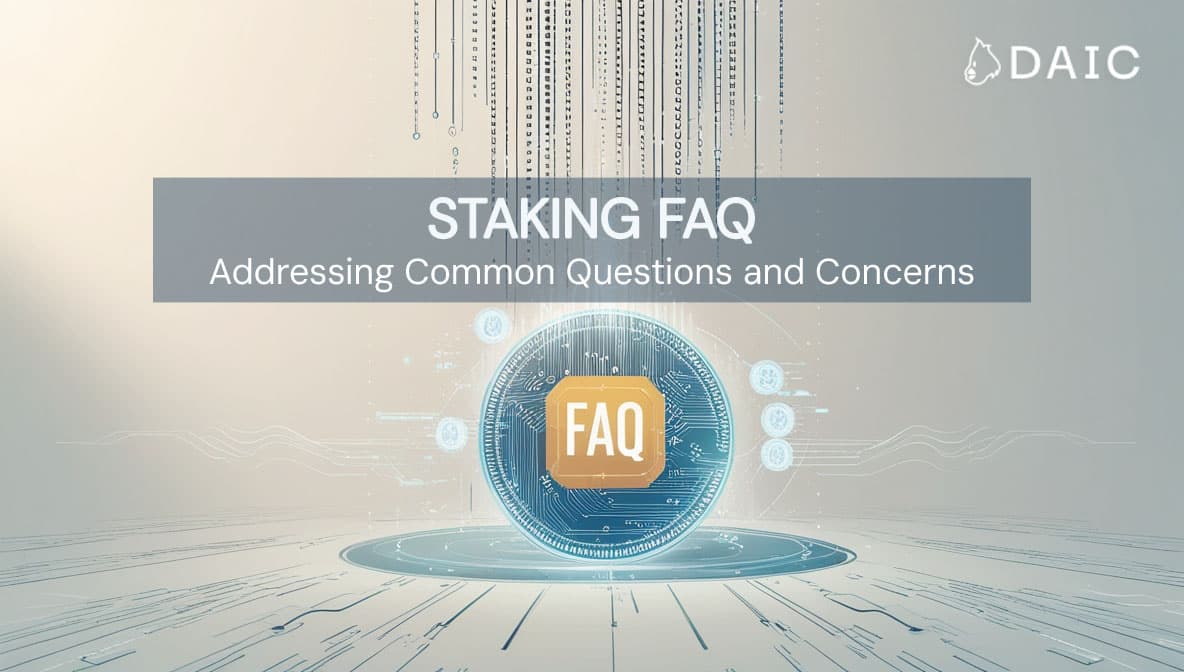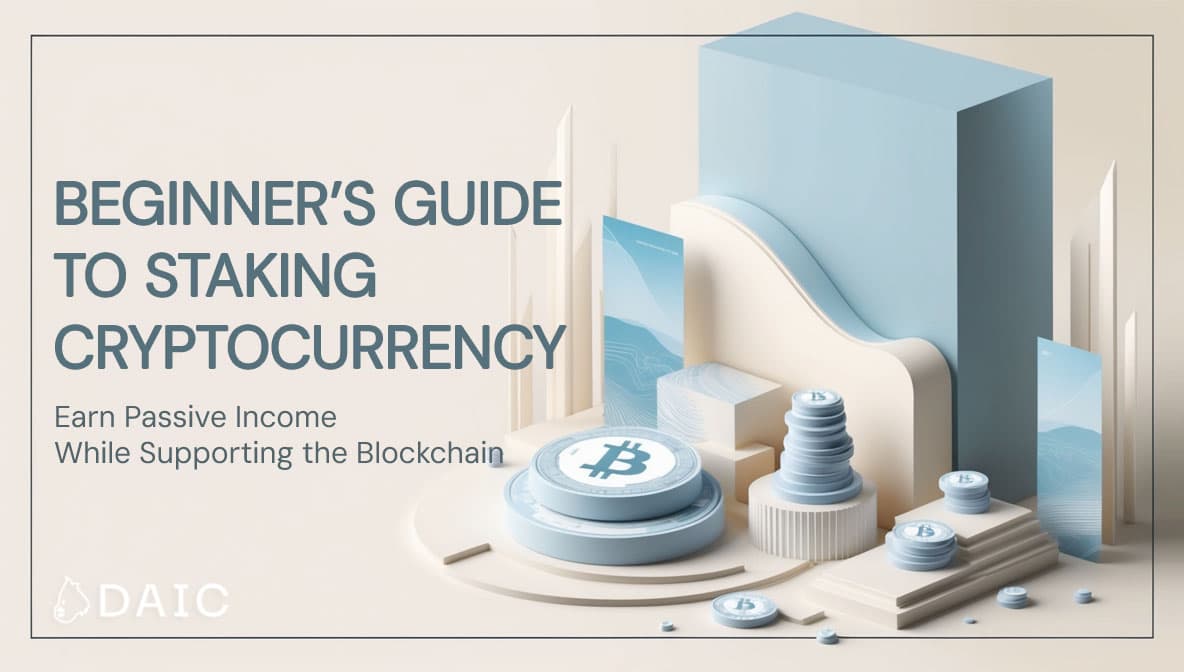In today's digital economy, owning an asset is only half the battle, securing it is the other half. As crypto staking moves from a niche hobby to a core financial strategy, the art of digital self-defense has become the most valuable skill for any serious investor. This guide will walk you through the essential security practices and new opportunities to help you become a smarter, safer staker.
Key Takeaways
- Staking requires active management, including regular performance reviews and security checks.
- A successful staking strategy prioritizes long-term security over chasing the highest short-term yields.
- Security in staking is multi-layered, involving your personal setup, validator choice, and platform evaluation.
- An emergency plan is essential for mitigating the impact of unexpected issues, while regular reviews help prevent them.
- Put this guide into action by following the complete security checklist at the end of this article.
Building Your Security Foundation for Crypto Staking

Welcome to what many are calling the golden age of crypto staking. Once a niche activity for tech-savvy enthusiasts, staking has blossomed into a major strategy for earning passive income. This growth isn't just from individual crypto users, traditional financial institutions are now entering the field, regulators are providing clearer guidelines, and the first-ever staking exchange-traded fund (ETF) is listed in U.S. Staking has evolved into a legitimate and mature investment strategy that should be based on advanced security measures.
But before we dive in, if you want to refresh your knowledge on the fundamentals, we’ve got you covered. You can explore our beginner’s staking guide for a great starting point, find quick answers in our staking FAQ , get a clear picture of the potential downsides by reading about the risks of staking , and weigh the potential rewards with our article on why you should consider crypto staking.
Choosing a Secure Wallet: Your First Line of Defense
If you're going to participate in staking, a crypto wallet is an absolute necessity. From a best practice perspective, the primary goal is always to keep your private keys, the ultimate password to your funds, as isolated as possible from online threats.
Why Hardware Wallets Are the Gold Standard for Security
Because your laptop is connected to the internet, it's inherently vulnerable. This is why the foundational best practice for staking security is to use a hardware wallet that will keep your private keys on a secure, offline chip. When you have to sign a transaction, the data is forwarded to the device, signed within, and then the signed transaction is sent back - your private key never leaves the safe chip. This creates a powerful barrier against malware and hacking attempts.
Hot Wallets vs. Hardware Wallets: The Convenience vs. Security Trade-Off
For convenience, some users opt for software-based "hot wallets" or stake directly on exchange platforms. These are usually easy to use, but either keep your keys in an online environment or you keep them in apps or browser extensions. This puts you at a wider attack surface. Best practice is to only use these services for smaller amounts that you're comfortable with being at higher risk.
What Are Multi-Signature (Multisig) Wallets and Who Needs Them?
For those managing substantial amounts or seeking institutional-level security, the best practice evolves to using a multi-signature (multisig) wallets. A multisig wallet requires multiple approvals before a transaction can be executed. A typical setup is "2-of-3," where you have three signing devices but only need two to sign off a transaction. This protects against loss, theft, or compromise of one device and offers a robust protection against single points of failure.
Staking vs. Liquid Staking: Which is More Secure?
Perhaps the largest decision all stakers have to make is between the upfront security of traditional staking and the flexibility of liquid staking. Analyzing this trade-off to align with your personal risk tolerance is a critical best practice.
Understanding Traditional Staking: Security and Simplicity
From a best practice perspective, the easiest and safest method is traditional staking. It is simple and involves minimal smart contract risk because you are directly working with the native functions of the network. The only actual difference is that your tokens are locked up and are illiquid for a period of time. To learn more, you can read our full guide on "What is Staking?".
Understanding Liquid Staking: Flexibility and Its Risks
Liquid staking, offered by protocols like Lido Finance, solves the problem of illiquidity by giving you a tradable token (e.g., stETH) that represents your staked assets. This makes it possible for you to use your capital in other DeFi protocols but creates new layers of risks. Best practice demands you carefully consider these added risks, which include:
- Smart contract vulnerabilities within the liquid staking protocol.
- "Depegging" risk, where the liquid token loses its 1:1 value with the underlying asset.
- Centralization concerns, if a single protocol becomes too dominant on the network.
You can explore these concepts further in our article, "What is Liquid Staking?".
Ultimately, there is no single right answer. Best practice is to make your choice in accordance with your own risk threshold. If ease of use and security are your top priorities, traditional staking is the more conservative approach. If you require capital efficiency and are willing to assume additional layers of risk, liquid staking can be a powerful tool.
How to Choose the Right Validator for Staking
From a best practice perspective, selecting a validator is not merely seeking the greatest reward, it's seeking a good partner who will ensure your assets are well-taken care of and kept running. To gain the complete sense of what to look for, you can read our entire guide on how to choose the right validator for staking.
Evaluating a Validator: Metrics That Matter Most
While foundational metrics like uptime (aim for 99%+) and commission rates (typically 5-10% is reasonable) are important, a thorough assessment goes deeper. Best practice is to analyze these key indicators:
- Recent Performance: How has the validator performed in the last 30–90 days? A validator with 99.5% lifetime uptime but only 95% recently may be experiencing issues.
- Commission Stability: Be cautious of validators that frequently change their commission rates. A stable, predictable fee structure suggests a more professional operation.
- Self-Stake Amount: How much of their own money does the validator have staked? A validator with significant "skin in the game" is more incentivized to maintain high standards.
Understand the Reality of Slashing
Slashing is the most significant risk associated with a validator. It is a penalty imposed by the network on a validator for malicious behavior or serious mistakes, and by extension, on you. These penalties can be severe: on Ethereum, for instance, you could lose a significant portion of your stake. To protect yourself, best practice involves looking for these clear signs:
Green Flags to Look For:
- Dedicated hardware with backup systems.
- Active participation in community discussions and governance.
- Transparent communication about their setup and practices.
Red Flags to Avoid:
- Any history of being slashed.
- Validators running on basic cloud infrastructure without redundancy.
- Suspiciously low commission rates, which may indicate corner-cutting on security.
Supporting Smaller Validators Boosts Network Health
Finally, a community-minded best practice is to think about supporting smaller, independent validators. Staking to validators lower than the top 20 that still meet your security standards keeps the network healthy and decentralized, typically with similar returns.
Platform Security: How to Evaluate Staking Services
Whether you're using a centralized exchange, a liquid staking protocol, or an AI-driven platform, knowing how to assess their security is a critical best practice. It’s important to choose the right service for your needs, and you can see our breakdown of the best platforms and exchanges for staking in our dedicated guide.
From a best practice perspective, here is a more complete checklist to guide your evaluation:
1. Inspect Smart Contract Audits
This remains the first and most critical step. Any platform handling your assets must have undergone multiple, recent security audits (within the last 12 months) from reputable firms. Ensure the audit reports are publicly available and that the platform has fixed any major issues that were found. Avoid platforms with no audits or those that are not transparent about the results.
2. Verify Insurance Coverage
A platform's commitment to security is also apparent in their insurance policies. Best practice is to verify if they have coverage and what is insured. In particular, look for slashing protection, smart contract failure insurance, and custodial theft coverage. Specialist providers like DAIC Capital, for example, have their own slashing and insurance fund policies.
3. Assess Their Validator Selection Process
Unless you're choosing the validator yourself (such as with liquid staking or on an exchange), you're trusting the platform's judgment. The smart thing to do is to find out how they select their validators. Reputable platforms should be transparent about using a diverse set of high-performance validators with strong security practices, and should avoid over-centralizing with just a few large operators.
4. Review the Terms of Service and Fees
Your rights, the fee structure, and the custody of your assets should be clearly defined in the terms of service. Be wary of ambiguous language or hidden fees. A fair and honest company will have brief and sensible terms.
5. Check Community Reputation and Support
Finally, look into the history and reputation of the platform within the crypto community. Visit standalone reviews and forums. A platform with a good performance history, transparency, and responsive customer support is generally a safer choice. Ensure they have clear emergency procedures documented in case something goes wrong.
The Hidden Risks of High APY Staking Projects
The most important question you can ask is: Where does the yield come from?
Legitimate staking rewards are generated from a network's transaction fees and its planned inflation schedule. In contrast, many high-APY projects generate "yield" simply by paying out rewards in their own token, which they can create out of thin air. This creates massive inflation, which continuously keeps lowering the token's price. You can be earning a high percentage of a declining token so that your actual return in value is negative. This model of economics relies on a continuous flow of new money to keep the price from crashing, which is volatile.
Red Flags for High-Yield Crypto Projects
One good practice is being extremely skeptical when considering these projects. The following are obvious red flags to look for:
No Clear Yield Source: The project cannot define how it makes such a high yield, except through issuing its own token.
Anonymous Team: The team is either anonymous or has no established history and thus no one is accountable, increasing the likelihood of a "rug pull."
No Token Utility: The token has no real use case in a functioning ecosystem aside from staking and speculation.
Are There Legitimate High APY Staking Opportunities?
While most are risky, there are a few scenarios where a high APY might be temporarily legitimate:
Short-Term Promotions: An established, reputable platform may offer high rates for a limited time to attract users.
New Network Launches: A new blockchain may offer temporary, high-yield incentives to attract the first validators and delegators needed to secure the network.
Projects with Real Utility: The project has a clear use case and sustainable tokenomics where the high yield is a strategic part of its early growth phase.
Risk Warning: From a risk management perspective, you should never invest more than you can afford to lose completely in high-APY projects.
Advanced Security: Planning, Risk Management, and Future-Proofing

In addition to selecting good wallets and validators, advanced security includes forward-thinking, careful planning, and ongoing watchfulness.
Emergency Planning: Your Proactive Defense
What happens if something goes wrong? Having a plan is crucial for minimizing potential losses and stress.
Draw up an Emergency Checklist: This document should be stored securely and include:
- Contact details of all platforms and validators you are using.
- Backup access procedures for all of your accounts.
- Detailed documentation of all of your staking positions.
- Emergency unstaking methods for each platform.
Conduct Regular Security Reviews: Set a schedule to stay on top of your security posture.
- Perform a monthly check of all validator performance.
- Complete a quarterly review of platform security updates.
- Conduct an annual review of your overall staking strategy.
Protecting Yourself from Common Risks
Phishing and Social Engineering
The biggest threat to most stakers isn't sophisticated hacking, it's being scammed. Phishing is most frequently performed via fake websites, crisis emails, and social network direct messages from fake support teams. Stay safe by always typing in URLs manually or bookmarking, never clicking on unsolicited links in emails or messages regarding your crypto activities, verify all communication through official channels, and use a hardware wallet that requires physical confirmation for withdrawals.
Permission Management
The most critical best practice is to be prudent when it comes to contract approvals. Never give unlimited permission to a smart contract. Regularly check and revoke unused contract approvals to limit your exposure in the event that a protocol that you used in the past gets hacked.
Market and Liquidity Risks
Staking is not just about tech security, you have to also be concerned with market risks. They are:
Slashing Risk: Your staked assets might get slashed for bad validator behavior.
Lock-up Risk: Your money may be illiquid for extended periods.
Depegging Risk: Liquid staking tokens may be less valuable than their underlying.
Inflation Risk: Overly generous staking rewards may be token inflation-based, which devalues the token as a whole.
Volatility Risk: A 50% drop in the asset's price will far outweigh a 5% staking reward, leading to a net loss in the dollar value of your investment.
Key Platform Features for User Control and Security
When reviewing a platform, best practice is to read it thoroughly in order to learn about withdrawal processes and staking mechanics. A safe platform should offer improvements on user control and risk protection.
- Asset Management Features:
- Risk Management Tools:
Future-Proofing Your Staking Strategy
The staking ecosystem will continue to evolve. If you want to get ahead of the game, you need to remain informed and adaptable.
Remain Informed: Follow reputable crypto news, engage with community forums for the networks you're staking on, and follow leading developers and researchers on social media.
Adjust Your Plan: Regularly revisit and improve your security routines, remain receptive to new staking possibilities, maintain a flexible mind, and be ready for regulatory changes.
Monitor Technology Developments: Keep up with advancements in technologies like quantum-resistant cryptography, new consensus algorithms, and cross-chain solutions to observe how the future of the ecosystem might impact your strategy.
Before we wrap up, here's a practical checklist to ensure you're set up for safe, successful staking.
Final Thoughts: Your Journey to Secure Staking Success
Congratulations, you now have the instruments and information to stake your crypto safely in today's promising market.
Remember, successful staking is not about playing a game of getting the biggest APY. It's finding a sustainable, secure method that suits you and your risk tolerance. By getting the basics (securing your keys, choosing reputable validators, and diversifying your strategy) you'll be in a good position to benefit from future expansion in the staking landscape.
In crypto, security is not only about guarding your holdings, it's also about protecting your future prospects. Happy staking!
The information provided by DAIC, including but not limited to research, analysis, data, or other content, is offered solely for informational purposes and does not constitute investment advice, financial advice, trading advice, or any other type of advice. DAIC does not recommend the purchase, sale, or holding of any cryptocurrency or other investment.


